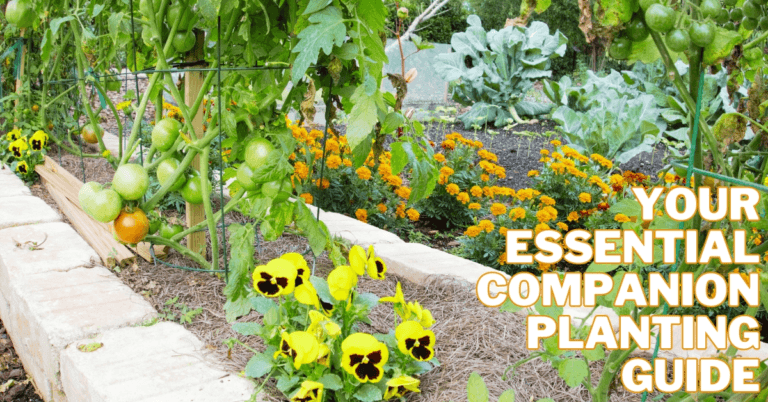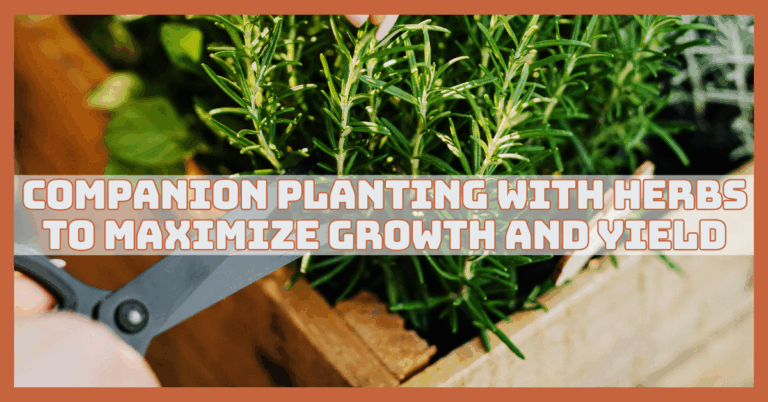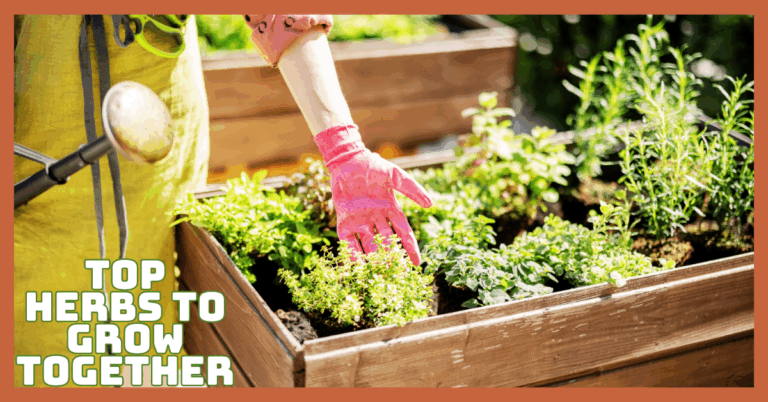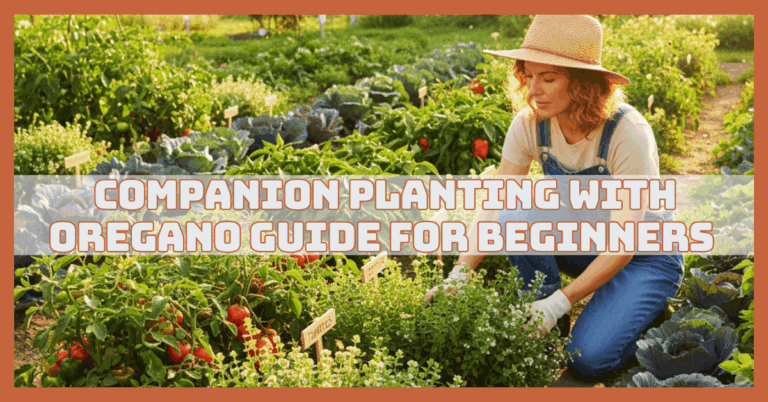Herb And Vegetable Companion Planting
10 Winning Herb And Vegetable Companion Planting Combinations
Companion planting is a powerful gardening technique that pairs herbs and vegetables to enhance growth, deter pests, and maximize space. Understanding which plants thrive together can create a more productive and harmonious garden ecosystem.
This blog explores essential herb and vegetable companion planting combinations and offers practical tips on how to plant them effectively. Below are examples of beneficial pairings and combinations to avoid.
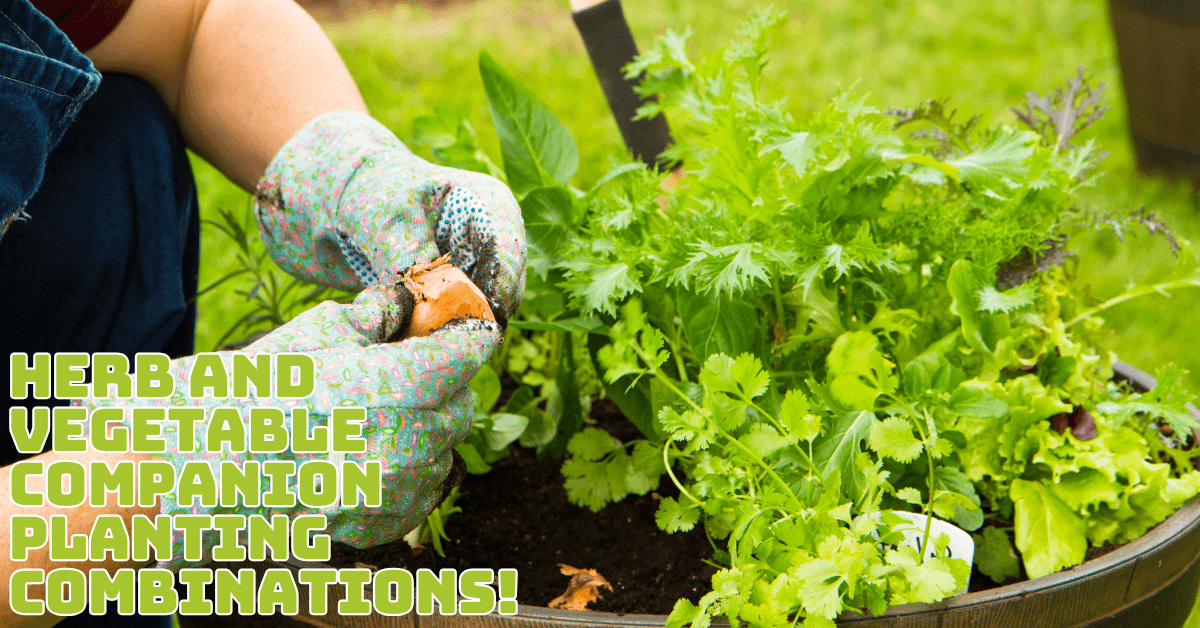
1. Basil And Tomatoes
Basil and tomatoes thrive when planted together. Place your tomato plants about 18 to 24 inches apart, and position the basil around the base, spacing them 12 to 18 inches away from the tomatoes.
Ensure they consistently receive full sun and water, keeping the soil moist but well-drained. Basil helps repel flies and mosquitoes, protects tomatoes from pests, and enhances flavour.
The aromatic herb also attracts bees, boosting pollination for both the tomatoes and nearby plants.
Bonus Tip
Add marigolds to this trio to help deter nematodes and other pests.
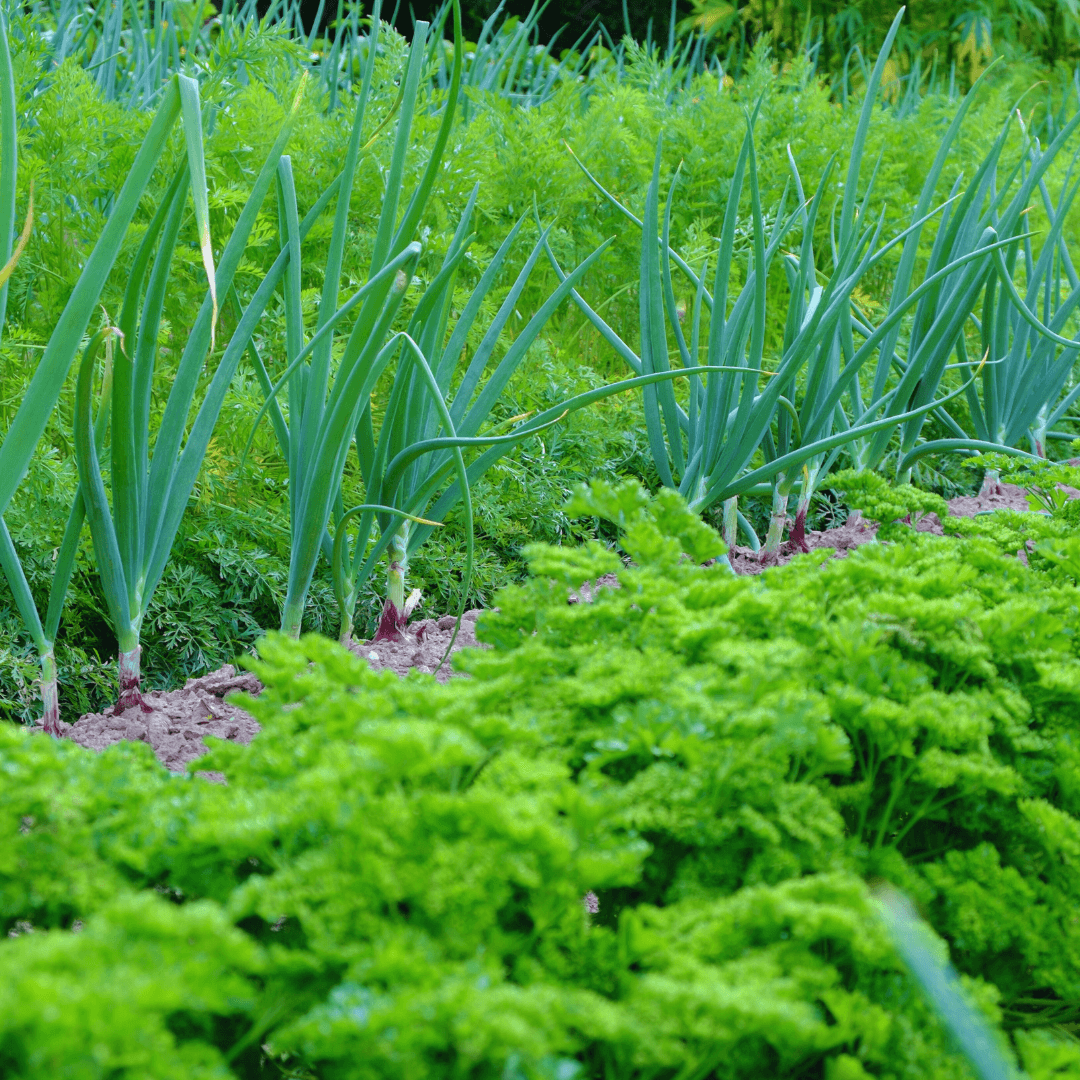
2. Carrots And Onions
Carrots and onions are ideal companions in the garden. Plant onion sets 4 to 6 inches apart in rows, then sow carrot seeds between the onion rows, spacing them about 2 inches apart.
Onions' strong scent deters carrot flies, protecting the carrots from pests. Carrots also help loosen and aerate the soil, promoting better onion growth.
Water the space evenly to ensure both crops grow healthily. Both plants want full sun and well-drained soil.
Avoid
Don’t plant carrots near dill, as dill can stunt their growth.
3. Cucumbers And Nasturtiums
Cucumbers and nasturtiums are a great planting combination for pest control. Plant cucumber seeds or seedlings 12 to 18 inches apart in rows, and sow nasturtium seeds around the edges or between the cucumber plants, spacing them about 10 to 12 inches apart.
As a “trap crop,” nasturtiums keep cucumber beetles and whiteflies away from cucumbers while drawing aphids away from them.
Both plants prefer full sun and well-drained soil, so moisten the soil to promote healthy growth and effective pest protection.
Bonus Tip
Nasturtiums are also edible and can add a peppery flavour to salads.
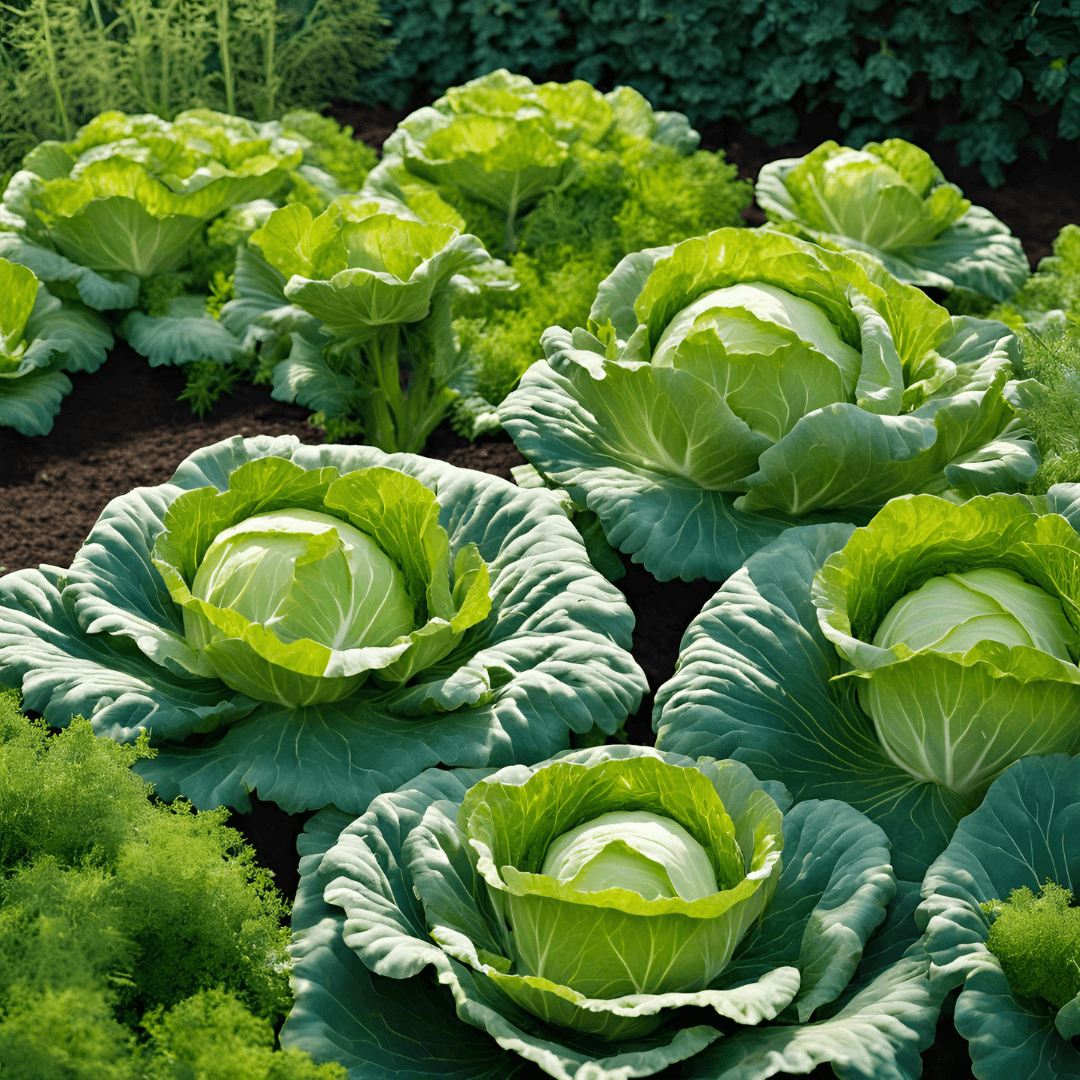
4. Cabbage And Dill
Cabbage and dill make a beneficial pairing in the garden. Plant cabbage seedlings about 18 to 24 inches apart and sow dill seeds nearby, ensuring they have about 12 inches of space.
Dill attracts predatory wasps that help control cabbage worms and other pests, protecting your cabbage.
Its deep roots improve soil structure, which benefits the shallow-rooted cabbage.
Water both plants frequently to promote healthy development and pest management. They both do best in full sun and well-drained soil.
Avoid
Keep dill away from carrots, as it can inhibit their growth.
5. Spinach And Radishes
Spinach and radishes work well together, optimizing your garden space. Plant radish seeds about 1 inch apart, and sow spinach seeds 2 inches apart in the same bed.
As radishes grow quickly, they’ll help loosen the soil for the slower-growing spinach roots. Harvest the radishes within 3 to 4 weeks, just as the spinach matures, making room for the spinach to thrive. Both plants enjoy cooler weather, so plant them in early spring or fall in well-drained, fertile soil.
Avoid
Avoid planting spinach near potatoes, as they can compete for nutrients.
6. Peppers And Marjoram
Peppers and marjoram make a beneficial pairing in the garden. Plant pepper seedlings 18 to 24 inches apart in rows, and position marjoram plants nearby, spacing them about 10 to 12 inches apart.
Marjoram enhances the flavour of peppers and repels pests like aphids and spider mites, protecting them. Full light and well-drained soil are ideal for both plants. Water regularly moistens the soil, ensuring healthy growth and flavourful peppers throughout the season.
Bonus Tip
Rotate your crops every season to avoid soil erosion and lessen the accumulation of pests and diseases. This will ensure healthier plants and improved garden productivity.
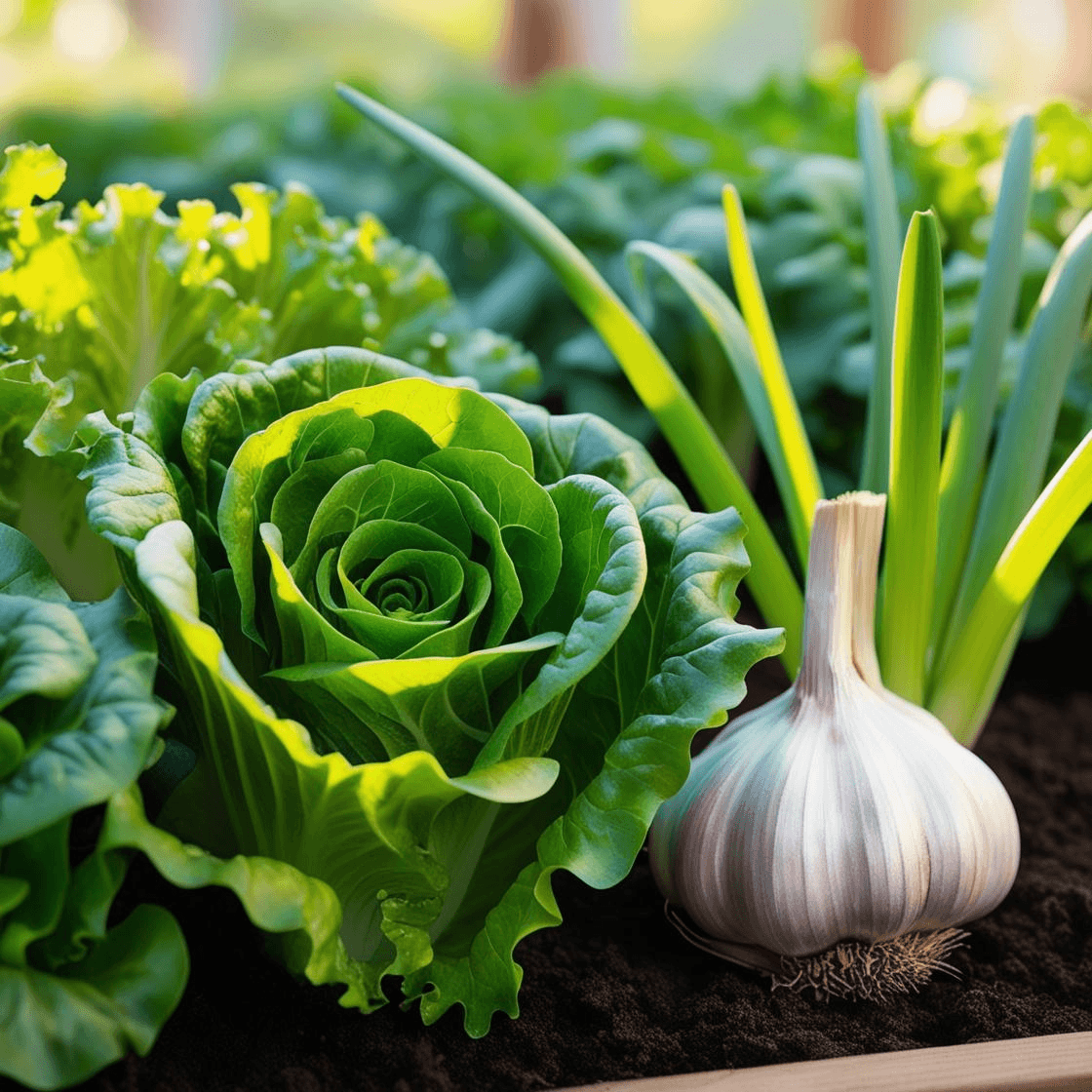
7. Lettuce And Garlic
Lettuce and garlic are excellent companions in the garden. Plant garlic cloves about 4 to 6 inches apart in rows, and sow lettuce seeds between the garlic, spacing them about 6 to 12 inches apart.
The long stalks of garlic can grow later since lettuce grows swiftly and can be picked in a few weeks. Both prefer full sun and soil that drains properly, so water them frequently to encourage strong growth and efficient aphid control.
Bonus Tip
Garlic grows well alongside strawberries, carrots, and tomatoes.
8. Beans And Corn
Beans and corn are key components of the traditional ‘Three Sisters' planting method. Corn seeds are planted in rows, spaced about 12 inches apart, allowing them to grow tall as a natural trellis for beans. After the corn is approximately 6 inches tall, plant bean seeds all around it, 4 to 6 inches apart.
If adding squash, plant it between corn and beans to suppress weeds and retain moisture. Ensure all plants receive full sun and consistent watering for optimal growth.
Avoid
Don’t plant beans near onions or garlic; they can stunt bean growth.

9. Fennel And Broccoli
Fennel and broccoli are a great pairing in the garden. Plant broccoli 18 to 24 inches apart to promote healthy growth and air circulation.
Sow fennel seeds nearby, allowing at least 12 to 18 inches between the two to accommodate fennel’s larger size. Beneficial insects that attack broccoli, such as lacewings and ladybugs, are drawn to fennel.
Water frequently to encourage healthy development and pest control because both plants prefer full sun and well-drained soil.
Bonus Tip
Fennel can inhibit the growth of some nearby plants, so avoid planting it close to carrots, cilantro, or other herbs. Regularly monitor your garden to ensure all plants thrive together harmoniously.
10. Parsley And Asparagus
To successfully interplant parsley with asparagus, plant asparagus crowns in early spring, spacing them about 12-18 inches apart in well-draining soil.
Once the asparagus shoots emerge, sow parsley seeds or transplant young parsley seedlings between the asparagus plants.
This arrangement allows the taller asparagus to shade the parsley, promoting its growth while protecting it from pests like aphids. Ensure both plants receive adequate moisture and sunlight for optimal development.
Bonus Tip
Regularly harvest parsley to promote bushier growth and prevent overshadowing the asparagus. Mulching can also retain moisture and suppress weeds, benefiting both plants.

Principles Of Companion Planting
While there are many ways to approach companion planting, the basic principles that apply across the board include:
1. Pest Control
Pest control is one of the fantastic benefits of companion planting! For instance, planting strong-smelling herbs like rosemary and sage can naturally repel pesky garden invaders like aphids and cabbage worms.
Strategically placing these herbs near your vulnerable vegetables protects your plants and promotes a healthier garden ecosystem. It’s a win-win for every gardener!
2. Attracting Beneficial Insects
Attracting beneficial insects is a delightful aspect of companion planting!
For example, flowers from dill and fennel add beauty to your garden and attract pollinators like bees and predatory insects such as ladybugs and lacewings.
These helpful visitors feast on pesky aphids, keeping your plants healthy. By planting these herbs, you create a thriving ecosystem that benefits your garden!
3. Nutrient Exchange
Nutrient exchange is a key benefit of companion planting! For instance, legumes like beans and peas are fantastic nitrogen fixers, enriching the soil with this essential nutrient.
When planted alongside nitrogen-hungry plants like tomatoes, they provide a natural boost that promotes healthy growth and vibrant fruit. Incorporating these nutrient partners into your garden will foster a more fertile environment for all your plants!
4. Shade And Support
Shade and support are fantastic benefits of planting tall crops alongside climbers!
For example, sturdy plants like corn or sunflowers can provide much-needed shade for heat-sensitive crops and serve as a natural trellis for climbing beans.
Allowing your beans to twine around these tall companions creates a mutually beneficial setup that maximizes space and ensures healthy growth for both!
5. Improved Growth And Flavour
Improved growth and flavour are exciting perks of companion planting! For instance, basil enhances the taste of tomatoes when planted nearby, creating a delicious pairing for your dishes.
This aromatic herb supports healthier tomato plants and encourages more robust growth. Mixing these companions in your garden allows you to enjoy a tastier harvest while boosting your plants' overall vitality!
6. Soil Improvement
Soil improvement is a key benefit of companion planting! Carrots and other deep-rooted plants are excellent at loosening up compacted soil, which allows air and nutrients to reach crops more easily.
Meanwhile, covering crops such as clover adds organic nitrogen to the soil, enriching it for future plantings. By incorporating these plants, you create a healthier soil environment that supports robust growth!

Companion Planting Tips
While companion planting can greatly benefit your garden, following these tips will ensure you get the most out of this practice:
1. Plan Your Layout
When planning your garden layout, prioritize the height and spread of your plants. Place taller crops like corn or sunflowers to the north or east to avoid shading shorter plants such as lettuce or radishes.
Consider sun exposure by grouping sun-loving plants in the brightest spots and shade-tolerant varieties in less sunny areas.
Additionally, group plants with comparable water requirements together to guarantee effective watering and ideal growth.
2. Rotate Your Crops
Crop rotation is crucial for preserving soil health and averting disease and pest problems. Shifting your plants' locations every season can prevent the depletion of some soil minerals. For example, follow heavy feeders like tomatoes with nitrogen-fixing crops like beans.
This practice disrupts pest life cycles and promotes a more balanced ecosystem, ultimately leading to healthier plants and improved yields.
3. Group Plants By Type
Grouping similar plants enhances garden efficiency and productivity. For instance, planting all legumes, like beans and peas, in one section allows you to harness their nitrogen-fixing capabilities, enriching the soil for subsequent crops.
This practice simplifies maintenance and makes managing watering and pest control easier. Additionally, clustering plants with similar light and moisture needs ensures they thrive together, maximizing your garden's overall health and yield.
4. Monitor Growth And Pests
A successful garden depends on monitoring your plants' development and well-being. Check your plants frequently for symptoms of stress, such as yellowing leaves or slowed development, and look for pest infestations, such as spider mites or aphids.
Pay attention to how companion plants interact; if one is thriving while another struggles, consider adjusting their placement. Taking a proactive stance may ensure a healthy and fruitful garden by making timely interventions.
5. Practice Good Soil Health
Good soil health is vital for a successful garden. Add organic matter regularly, such as compost or well-rotted manure to enhance your soil's structure and nutrient content. Maintaining proper moisture levels is equally important; avoid overwatering or letting the soil dry completely.
Healthy soil promotes strong root development and increases the effectiveness of companion planting, ultimately leading to more vigorous plants and abundant harvests.
6. Don’t Overcrowd
Avoiding overcrowding is essential for healthy plant growth. When plants are too close together, they compete for sunlight, water, and nutrients, stunting their development and increasing susceptibility to diseases.
Always follow recommended spacing guidelines for each plant type to ensure they have enough room to thrive. This practice promotes better air circulation and reduces the risk of pest infestations, resulting in a more productive garden.
Companion Gardening Chart
Using this chart, you can optimize your garden layout, maximize yields, and create a more balanced and sustainable environment for your plants.
Simply follow the chart to identify beneficial companion plants and avoid pairing incompatible ones to support each plant’s growth and success.
printable companion gardening chart.pdf
How To Use The Chart
Best Companions
These plants work well together, either by deterring pests, improving flavour, or providing physical support.
Incompatible Plants
These plants should not be planted near each other as they may attract similar pests, compete for nutrients, or stunt growth.
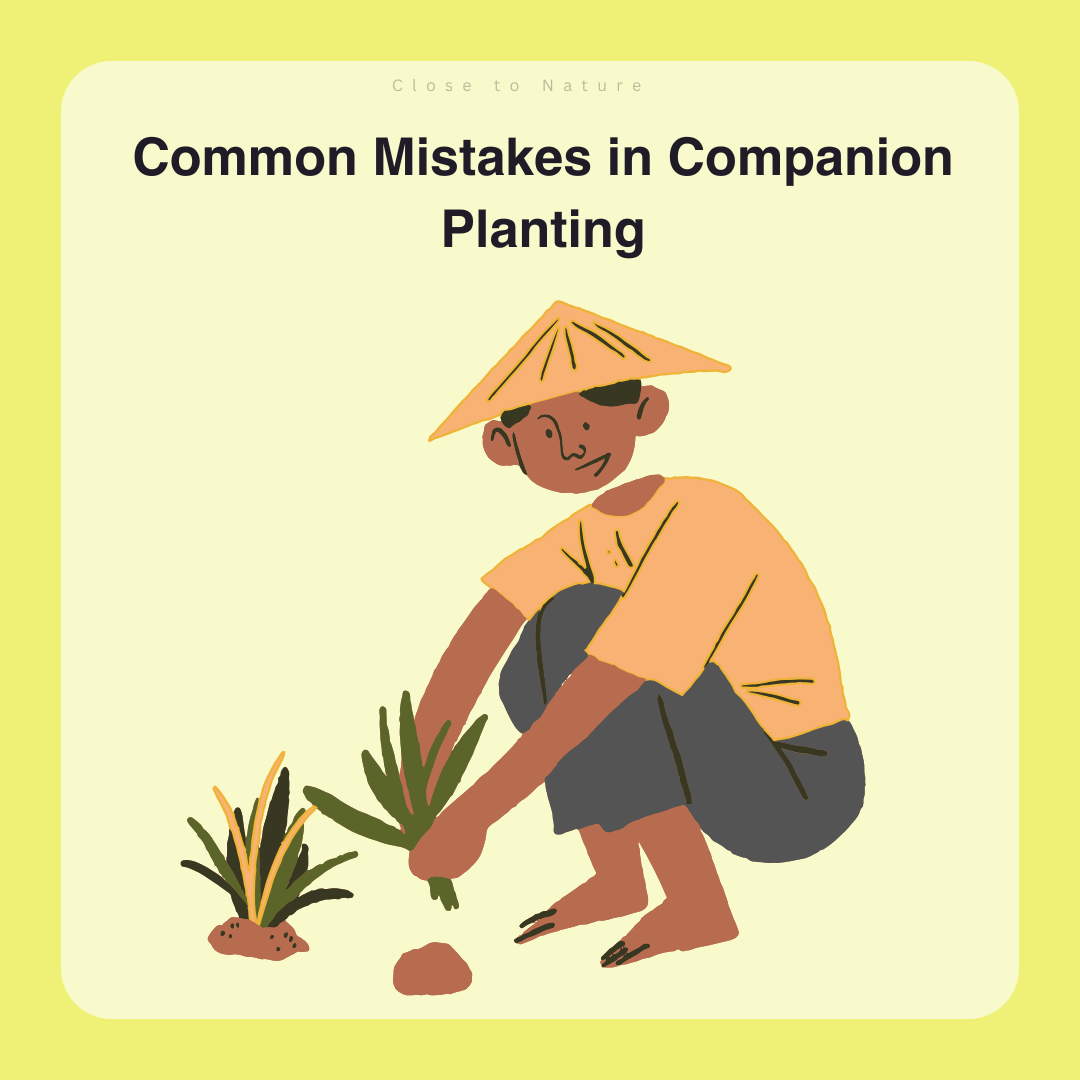
Common Mistakes In Companion Planting
Many novice gardeners may inadvertently make mistakes that hinder the potential benefits of companion planting. Here are a few common pitfalls to watch out for:
1. Ignoring Spacing Requirements
One of the most frequent errors is overcrowding plants. Plants that are too close to one another fight for nutrients, water, and sunshine, which slows growth and makes them more vulnerable to illness.
Always adhere to recommended spacing guidelines for each plant type. Use a garden planner or spacing chart to ensure optimal arrangements.
2. Overlooking Soil Needs
Different plants have varying soil preferences and nutrient requirements. For instance, legumes like beans enrich the soil with nitrogen, while heavy feeders like tomatoes require nutrient-rich soil.
Ignoring these variations can result in surpluses or shortages of some nutrients. Before planting, test your soil to understand its composition and make amendments as needed.
3. Not Considering Growth Stages
Plant growth rates can vary significantly, leading to competition and overshadowing. For example, fast-growing plants like radishes can be sown alongside slower growers like carrots, but if not harvested in time, they might outcompete the carrots for space and resources. Plan your planting schedule to ensure quick-growing crops are harvested before their slower counterparts mature.
4. Planting Incompatible Species
Not all plants are good companions. Some can inhibit the growth of others or attract the same pests, leading to increased competition and decreased yields.
For instance, planting beans near onions or garlic can stunt their growth—research compatible and incompatible plants to avoid detrimental pairings.
5. Neglecting Watering Needs
Different plants have different water requirements, and ignoring this can lead to issues. For example, succulents and drought-tolerant plants shouldn’t be planted alongside those that require consistently moist soil.
To make your irrigation routine easier and guarantee every plant thrives, group plants with comparable watering requirements together.
6. Failure To Monitor Plant Health
Regularly monitoring your plants is crucial for early pest detection and overall health assessment. If you notice one plant thriving while its companion struggles, it may be time to reassess its placement. Watch for symptoms of stress, such as drooping or yellowing leaves, and take quick care of any problems.
7. Disregarding Environmental Factors
Factors such as sunlight, temperature, and humidity can significantly affect plant growth. Placing sun-loving plants in shaded areas or temperature-sensitive plants in direct sunlight can lead to poor performance. Observe your garden's microclimates and position your plants according to their specific environmental needs.
8. Skipping Crop Rotation
Crop rotation is crucial to preserve soil health and avoid the accumulation of pests and diseases. Some gardeners overlook this practice, depleting soil nutrients and increasing pest problems. Each season, change the location of your plants, especially heavy feeders, to promote a balanced ecosystem.
FAQ
1. Can I Use Companion Planting In Container Gardens?
Answer: Absolutely! Companion planting works well in container gardens. Just ensure that the plants you choose have similar water and light requirements, and consider the size of the container to provide adequate space for each plant to grow.
2. Is Companion Planting A Sustainable Gardening Practice?
Answer: Yes, companion planting promotes sustainability by reducing the need for chemical pesticides and fertilizers, encouraging biodiversity, and improving soil health. It creates a balanced ecosystem that can lead to a healthier garden environment.
Conclusion
Incorporating herb and vegetable companion planting into your garden is a smart way to boost growth, enhance flavours, and create a thriving ecosystem.
By understanding the unique benefits of each pairing, you can effectively manage pests, improve soil health, and attract beneficial insects.
Embrace these natural relationships in your garden, and enjoy the rewards of healthier plants and a more bountiful harvest! Happy gardening!
I trust you enjoyed this article on the 10 Winning Herb and Vegetable Companion Planting Combinations. Stay tuned for more blog posts soon. Take care!
JeannetteZ
>>>Please click here to read my all-inclusive article, About The Essential Companion Planting Guide<<<
>>>Please click here to read my all-inclusive article about Container Gardening<<<
>>>Are you interested in homegrown herbs and medicine? Please click here to find out more about it!<<<
Your Opinion Is Important To Me
Do you have thoughts, ideas, or questions? I would love to hear from you. Please leave me your questions, experiences, and remarks about this article, 10 Winning Herb And Vegetable Companion Planting Combinations, in the comments section below. You can also email me at Jeannette@Close-To-Nature.org.
Disclosure
This post may contain affiliate links. As an Amazon Associate and other affiliate programs, I earn from qualifying purchases at no extra cost to you. Please read my full affiliate disclosure.
You might also enjoy these blog posts:
Exploring Animal Communication: What Your Pet Is Trying To Tell You
Common Symptoms Of Stress In A Dog You Shouldn’t Ignore
Interesting Facts About White-Tailed Deer
Largest Owls In The World: Majestic Giants Of The Wild




